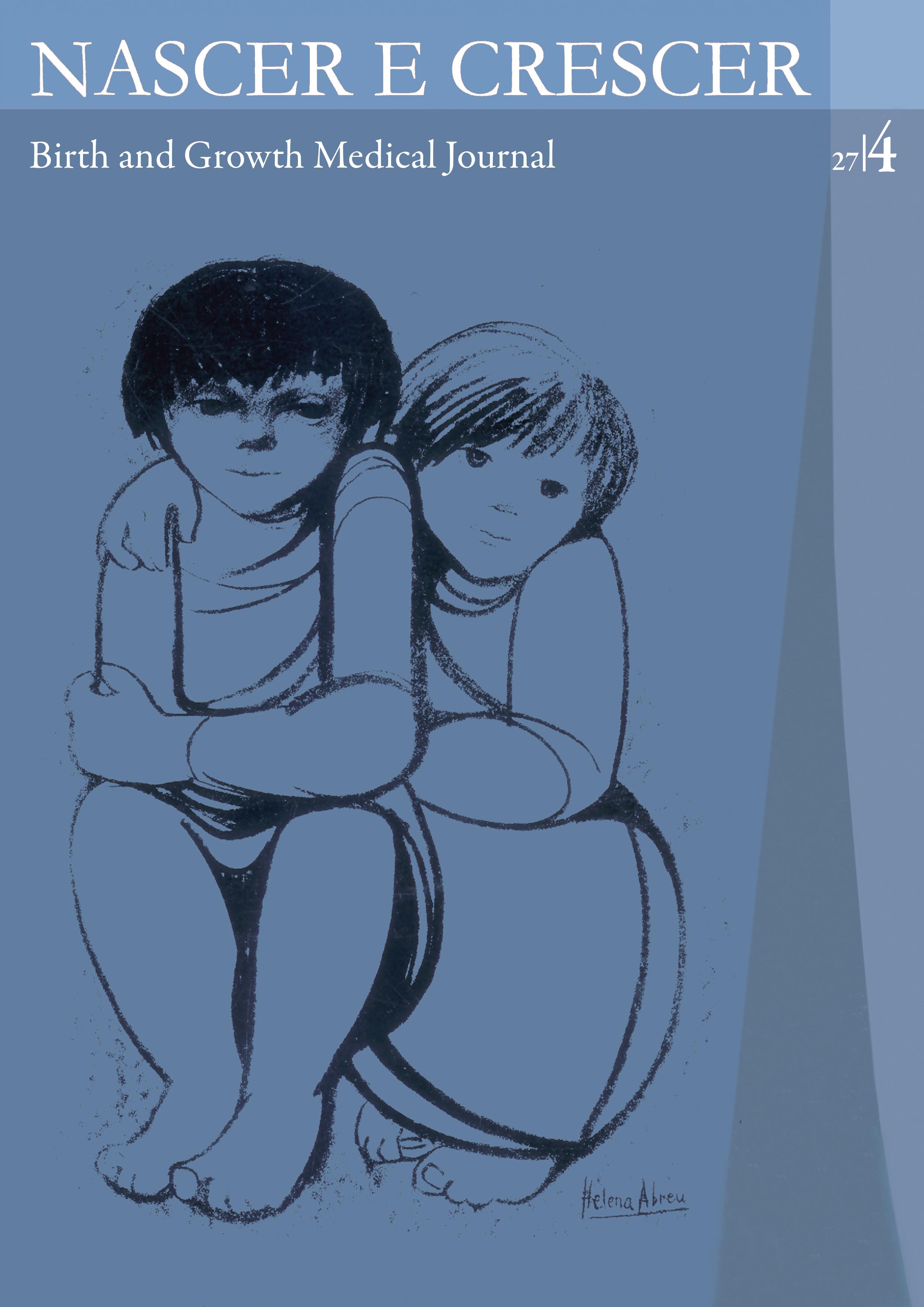Perinatal clinical case
DOI:
https://doi.org/10.25753/BirthGrowthMJ.v27.i4.14041Keywords:
Fibromatosis colli, Newborn, TorticollisAbstract
A 16-day-old male was observed at the Emergency Department for a right cervical mass noticed on the same day by the parents, with no other associated symptoms. He was a fullterm child, delivered by vacuum extraction, with an uneventful perinatal period.
At the time of physical examination, a cervical mass was palpable in the inferior portion of the right sternocleidomastoid muscle, in association with ipsilateral torticollis.
Cervical ultrasound revealed a fusiform thickening of the sternocleidomastoid muscle, with well-defined, hypoechoic margins, confirming the diagnosis of fibromatosis colli.
Parents were instructed to adopt positioning measures and physical therapy was initiated, with clinical resolution by seven months of age.
Fibromatosis colli is the most severe presentation of congenital muscular torticollis. Although typical clinical findings usually enable the diagnosis, cervical ultrasound is useful to confirm muscular origin of the mass.
Torticollis in the opposite direction of the mass, spinal deformities, abnormal eye movements, or other abnormal neurological findings
Downloads
References
Macias C, Gan V (2017). Congenital muscular torticollis: Clinical features and diagnosis. In Phillips W (Ed.), UpToDate. Retrieved February 2018 from: www.uptodate.com/contents/congenital-muscular-torticollis-clinical-features-and-diagnosis.
Cheng JC, Wong MW, Tang SP, et al. Clinical determinants of the outcome of manual stretching in the treatment of congenital muscular torticollis in infants. A prospective study of eight hundred and twenty-one cases. J Bone Joint Surg Am 2001; 83-A:679.
Kaplan SL, Coulter C, Fetters L. Physical therapy management of congenital muscular torticollis: an evidence-based clinical practice guideline: from the Section on Pediatrics of the American Physical Therapy Association. Pediatr Phys Ther. 2013; 25(4):348-94.
Downloads
Published
How to Cite
Issue
Section
License
Copyright and Authors' Rights
All articles published in Nascer e Crescer - Birth and Growth Medical Journal are Open Access and comply with the requirements of funding agencies or academic institutions. For use by third parties, Nascer e Crescer - Birth and Growth Medical Journal adheres to the terms of the Creative Commons License "Attribution - Non-Commercial Use (CC-BY-NC)".
It is the author's responsibility to obtain permission to reproduce figures, tables, etc. from other publications.
Authors must submit a Conflict of Interest statement and an Authorship Form with the submission of the article. An e-mail will be sent to the corresponding author confirming receipt of the manuscript.
Authors are permitted to make their articles available in repositories at their home institutions, provided that they always indicate where the articles were published and adhere to the terms of the Creative Commons license.


